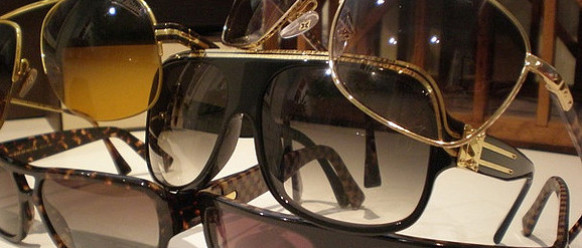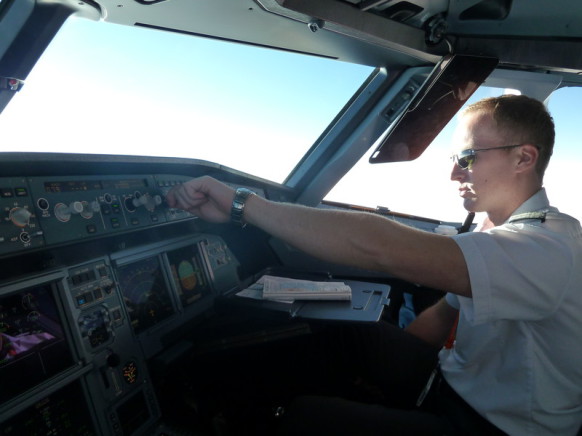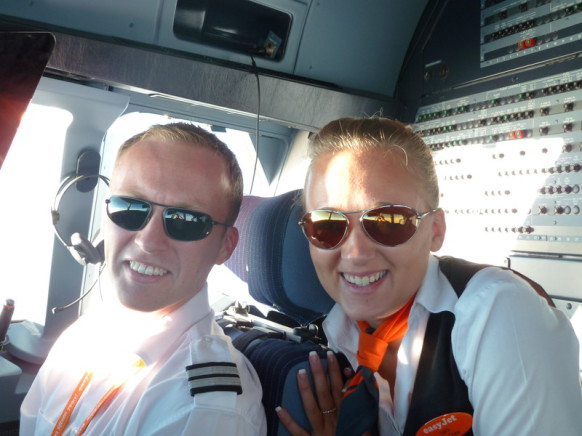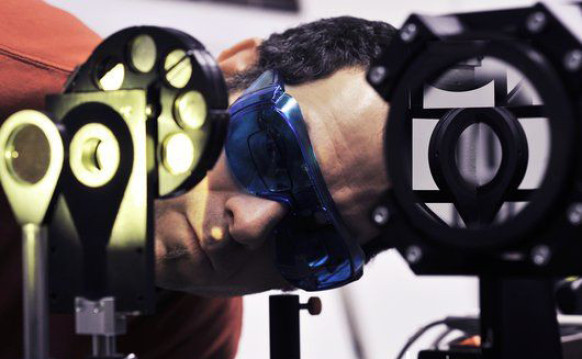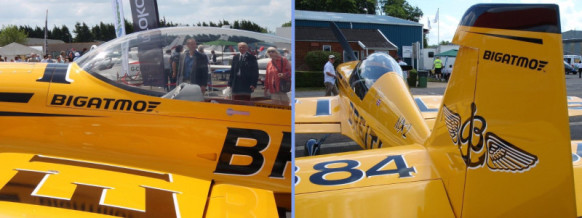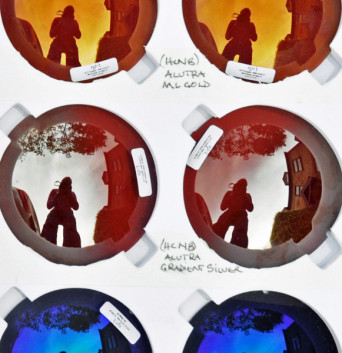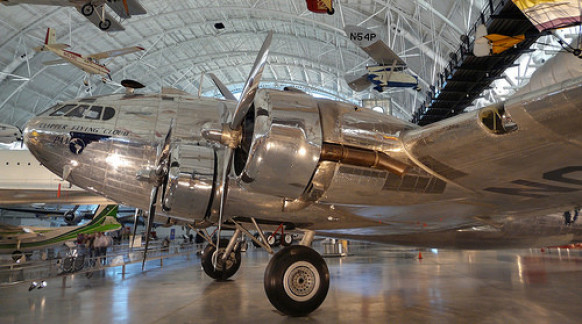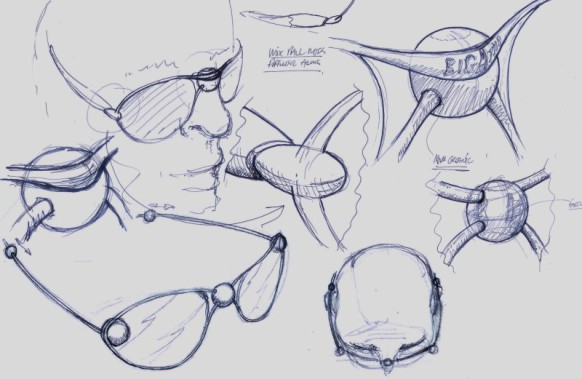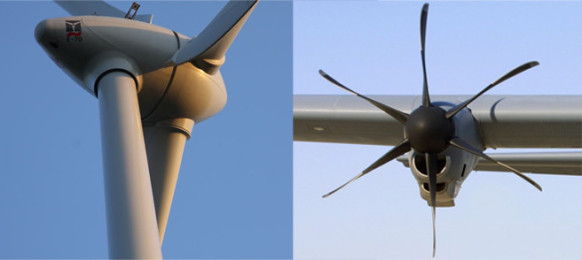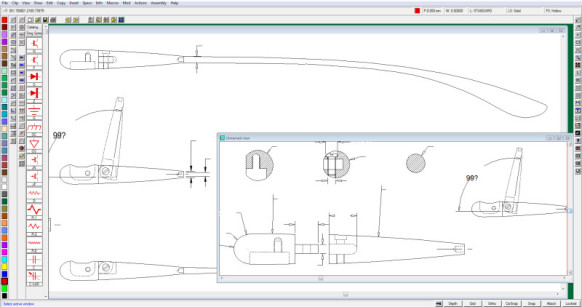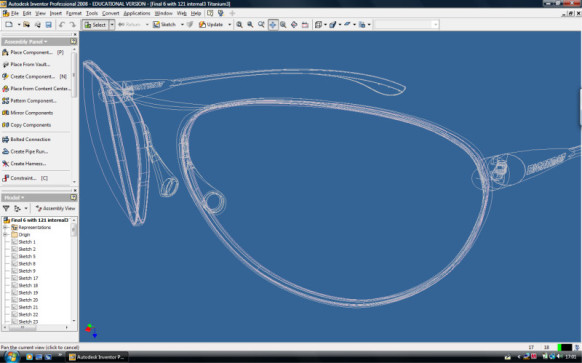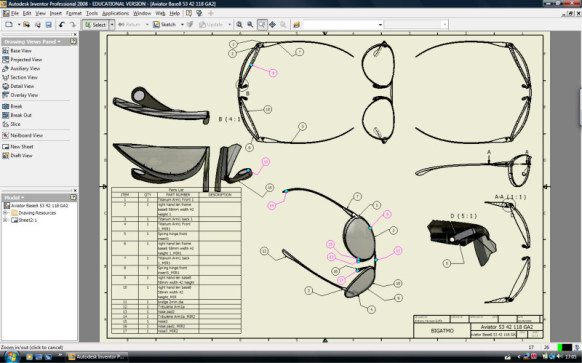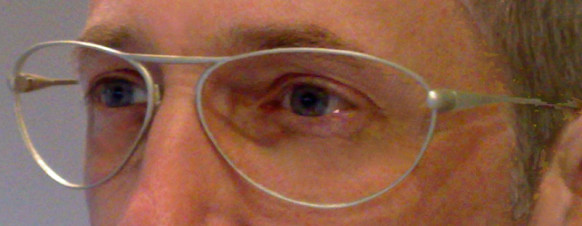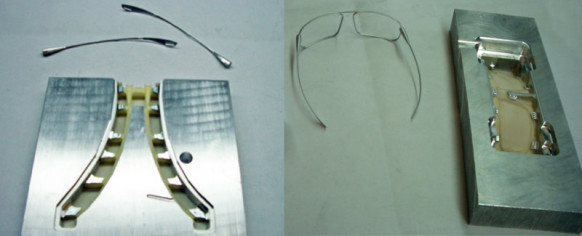
Bigatmo design & development story
by Anthony Harrison-Griffin
Background
Alastair Carrie is a commercial Airline Pilot and good friend of mine with a real passion for sunglasses that was only diminished by his frustrations of being unable to find the perfect product that dealt with the specific demands of the Pilot.
It was his optician who finally said, as they looked at the mountain of sunglasses he’d rejected on the table in front of them, “Why don’t you just go and design your own?” With those words ringing in his ears Alastair started his quest beginning with the very specific optical lens requirements he needed.
However, it wasn‘t long before he realised there were other equally important issues to be resolved, in the function and overall design side of producing a product such as this and turned to me for help.
We sat for many hours in a brain-storming state, ultimately coming up with the key elements needed for these glasses. Armed with this we returned to the existing products on the market to once again confirm that there was no such product currently available. It also soon became clear that what we sought in a product for use at 30,000 feet was actually potentially highly relevant and needed back here on earth in the everyday world.
The Optical Quest:
- The glasses needed to allow clear vision of instrumentation, particularly in the high contrasting light conditions of a cockpit.
- Provide protection from the intensity of bright sunlight,
- Filter out dangerous, damaging rays, yet giving true colour definition.
- A level of light transmission that keeps the eyes in a stress free state.
- A level of comfort that allows many hours of wearing without fatigue.
- Confidence that the glasses will stay in place, even when headsets move and are removed.
- A level of toughness and durability appropriate to the application and environment..
The sunglasses industry is a mature market, with several well-established big brand names occupying the top spot in technology, precision and design. There are an ever increasing number of high end fashion brands which are sold principally on the back of their brand names and a particular look, rather than anything technical.
So to be able to break into this well established market was going to be a real challenge and require a level of uniqueness and design / marketing skill.
It was however clear that if indeed we could achieve our design objectives it would provide us with a level of uniqueness over all others and a real opportunity. The USPs (Unique Sales Point) we sought!
Furthermore, if we were able ultimately to produce a product that performed far better than any other on the market specifically for pilots, a niche market though it is, it would provide the initial sales platform with a real opportunity to develop a high end sunglasses product business.
The Design Lab
The Design Lab was established as our creative hub, being able to pull together the best of the best under one R&D umbrella. A dedicated team of professional designers, scientists, engineers, optical experts and some of the leading figures in the optical world were all drawn together to begin our adventure.
Through our contacts we also had unparalleled access to a host of professional jet line pilots, air-racers and drivers able to amass thousands of hours’ worth of live testing.
From the outset various fundamental requirements of our initial range offer were established.
We were on a mission to establish probably the highest technical sun lens products available. The lens technology involved was going to be at a premium price. We therefore had to embrace those elements and expand upon them to create an exceptional product in every way worthy of its technical prowess
The Design objective:
- Technical, with a precision quality look and feel with an exceptional attention to detail.
- A modern classic, desirable yet with a non-controversial range that would give choice and yet needing to be as unisex and universal as possible
- Timeless, with the glasses looking as up-to-date in 5-10 years time, as they did on day one.
- Comfort was a priority, with pilots needing to wear them for many hours without fatigue.
- Strength and durability were an absolute must.
- Available as a prescription sun lens product
The Design Process
Alastair had already carried out considerable and fundamental development on the types of lens technology that would be required and started to carry out extensive live testing, which ultimately resulted in establishing the precise requirements of the lens.
With the need for light weight and durability, a plastic lens was always the most likely candidate. We came across the NXT material, developed primarily for use in cockpit screens on military attack helicopters. It is in fact bullet proof. This makes them exceptionally tough and with excellent optical clarity. We proceeded to develop a series of formulated NXT lens samples to our requirements and fitted them into some existing frames for much more extensive trials within the airline pilot world.
As a result we were able to establish our two fundamental NXT lens formulas providing us with the specific optical qualities we sought as well as durability, strength and lightness.
Titanium for the frames was very quickly established as the material of choice, providing great strength and lightness in weight, which was even more of an issue, as we needed to produce a full frame lens design. Finding a suitable manufacturer for such a product was going to be a challenge, as most Titanium eyewear makers use simple wire bending type technology.
I’m a natural freeform sketcher and initially spent a few weeks developing the design principles we could use. I drew upon the aviation influence elements we had around us, looking back to the pioneering days of flight, with those wonderful shiny streamlined shapes and the propeller details. I was naturally drawn to a more organic feel with all those curves available. Titanium in eyewear as I mentioned previously is normally produced by the bending up of pre-extruded section wire, making the frames uniform section throughout. I sought a far more sculptural design form, with blended thick/thin sections which were needed both technically as well as to providing a visual aesthetic balance.
I soon was able to develop and establish our signature torpedo temple shape reflecting the centre of a propeller and the propellers provided the influence for the rest of the temple arm design. With the need for the head gripping properties we had already established, the correct shapes soon came to life!
With the temple forms now established, I developed the idea of an organic transition of forms and a sculptural frame design soon naturally evolved. The eye shapes I simply developed from interpretation of the already well-established classic eye shape designs and blended them to the organic principles I had established. This was further moderated by the need to prevent as much rear light transmission behind the lens as possible.
I wanted to produce an initial range of eye shapes that would provide the customer with a variety of styles but as far as possible making them all equally appealing and desirable.
This was achieved in the resulting 5 frame designs, providing us with a depth of range and simple unisex styles offer and making each of them universal.
From sketching I quickly moved to the computer, using the very latest in CAD technology to fine tune my conceptual designs, with the need to have an established dimensional protocol we had long before discussed, to achieve the correct comfort fit etc. It was at this point that I had the idea of using beta-titanium for the temples. This allowed me to use the natural springiness of that material to create a perfect flat fit to the side of the head, without the need for traditional sprung hinges. One common issue for pilots wearing sunglasses is that they have to be combined with the wearing of a headset. Commonly, glasses often become dislodged as pilots move or remove their headset.
To combat this I was able within the design to create very thin temple arms that allowed the headsets to simply slide over them without disruption. This became one of the unique elements of our final design and ultimately our product.
There was a further consequence to this unique approach. Having a more precise head fit increased the overall contact area of the temples. By gripping the side of the head, it reduced the distribution of weight away from the nose to increase in the wearer’s overall comfort.
So with a dimensional head protocol established, I reintroduced this to each of the frame design models and made suitable corrections to bring them all in line.
Using 3D rendering we are able to visually proportion and balance the designs in areas such as frame section thickness etc. For example, I felt the torpedoes were such a key design element and unique that they needed to become a strong signature element of our design. However, careful size and shape balance was needed to get them to look in place and not as though the wearer had two headlights either side of his face!
This visualization stage completed we produced a series of SLA models directly off my CAD data. These models provided us with something real we could trial and carry out further tests on many different heads, allowing final adjustments to be made to the designs.
Traditionally in other industries it is a simple exercise to hand over the resolved 3D data so that any necessary tool can be created directly using the computer data and, as such, all dimensions and orientation is maintained as designed. However, it quickly became apparent that, although the optical lens manufacturing industry is well developed and highly technical, our metal frame designs in 3D digital was at odds with the much more traditional and less developed techniques used in the associated metal forming frame manufacturing world. To be fair this level of technology appears adequate and appropriate for what is currently being produced on the market. However, for our sculptural free flowing sectional frame designs it was going to be a challenge. For example all current metal full frames are drawn up in a 2D format in a sort of flattened out development protocol, that only the experienced can fully understand and work with, it is like having their own internal language.
After much head scratching as to how we could transfer and clearly communicate my designs into their production world, there was really only one definitive method that could be used.
I used our 5-axis CAM milling machine to cut all parts exactly to a functioning model out of solid Aluminium. This was a lengthy and costly process. However, it provided us with a set of 100% matching functional models to our completed designs. Furthermore all assembly procedures and methods could be evaluated and elements finely tuned prior to any commitment to actual production and any tooling etc.
These models then were finally handed over to manufacturing to create exacting copies using their traditional methods and techniques, always having the exact model to hand to double check everything. The models also provided us with an opportunity to work on other associated items, such as packaging, cases, etc. We also glazed these models, providing us with some valuable pre-production testing and marketing photography for leaflets and web site.

